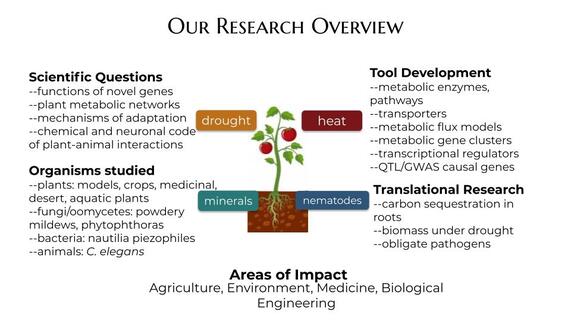Rhee Lab Research
|
|
Climate change is the single biggest threat to global human health, and is expected to cause about a quarter of a million deaths globally from malnutrition, infectious diseases and heat stress (link). Climate change is rapidly changing the habitability of many species on many places on Earth. We need innovations in science and technology to tackle global sustainability, food security, human health, and biodiversity.
Plants not only underpin terrestrial ecosystems and feed us, but also bestow renewable energy and essential medicines. Plants also sequester a significant proportion of the world’s carbon. Therefore, to meet today’s societal challenges, we need technological and conceptual advances in plant science. |







